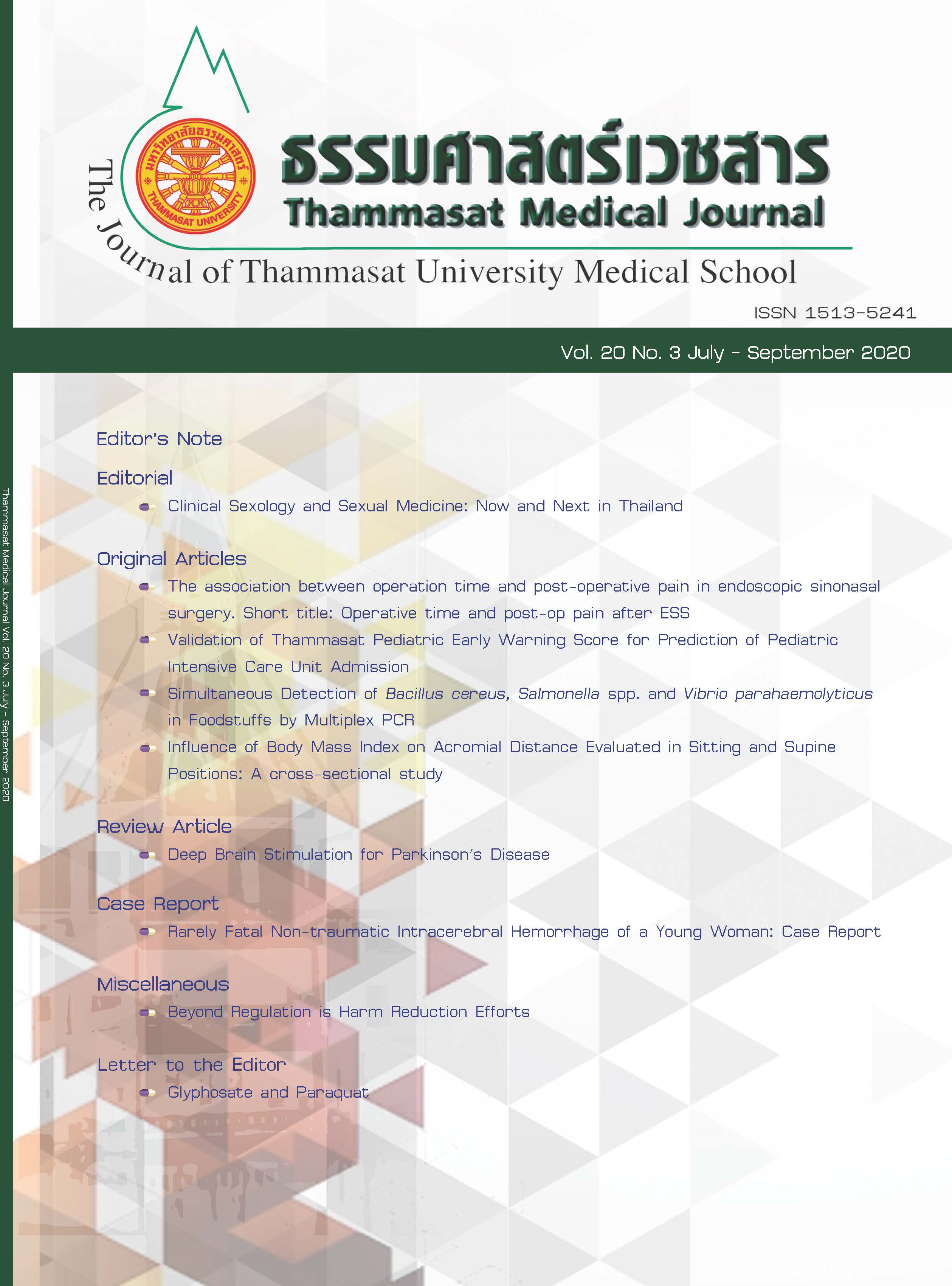Influence of Body Mass Index on Acromial Distance Evaluated in Sitting and Supine Positions: A cross-sectional study
Keywords:
Acromial distance, Pectoralis minor length, Body mass index, Rounded shoulder postureAbstract
Objective: 1) To analyse the effect of body mass index (BMI) on acromial distance (AD) evaluation in sitting and supine positions. 2) To clarify intra- and inter-rater reliability of AD evaluation.
Methods: A cross-sectional study was conducted by 4 well trained assessors in 2 Physical Therapy Faculties. A total of 114 healthy participants (aged 18–48 years old), comprising 20 males and 94 females. Participants were recruited through purposive sampling and separated into two groups according to BMI group 1 (BMI less than 23 kg/m2; n=69), and BMI group 2 (BMI greater than or equal to 23 kg/m2; n=44). Main outcome measures were the AD evaluations in both sitting and supine positions were evaluated, and compared between BMI groups using independent-sample T Test.
Results: For participants in BMI group 1 and group 2, the average AD in the sitting position was 69.1 mm and 81.3 mm (P < 0.001), respectively. In the supine position, the average AD for participants in BMI group 1 and group 2 was 39.4 mm and 56.1 mm (P < 0.001), respectively. There was a statistically significant difference in AD values between the BMI groups (P < 0.001). The AD evaluations showed excellent both intra-rater reliability (ICC3,1 0.991 to 0.999) and inter-rater reliability (ICC2,1 0.954 to 0.999).
Conclusions: The AD values in both positions were significantly increased in the participants with a higher BMI. Therefore, BMI should be taken into account when using AD for clinical monitoring and interventions to correct pectoralis minor length or rounded shoulder posture.



